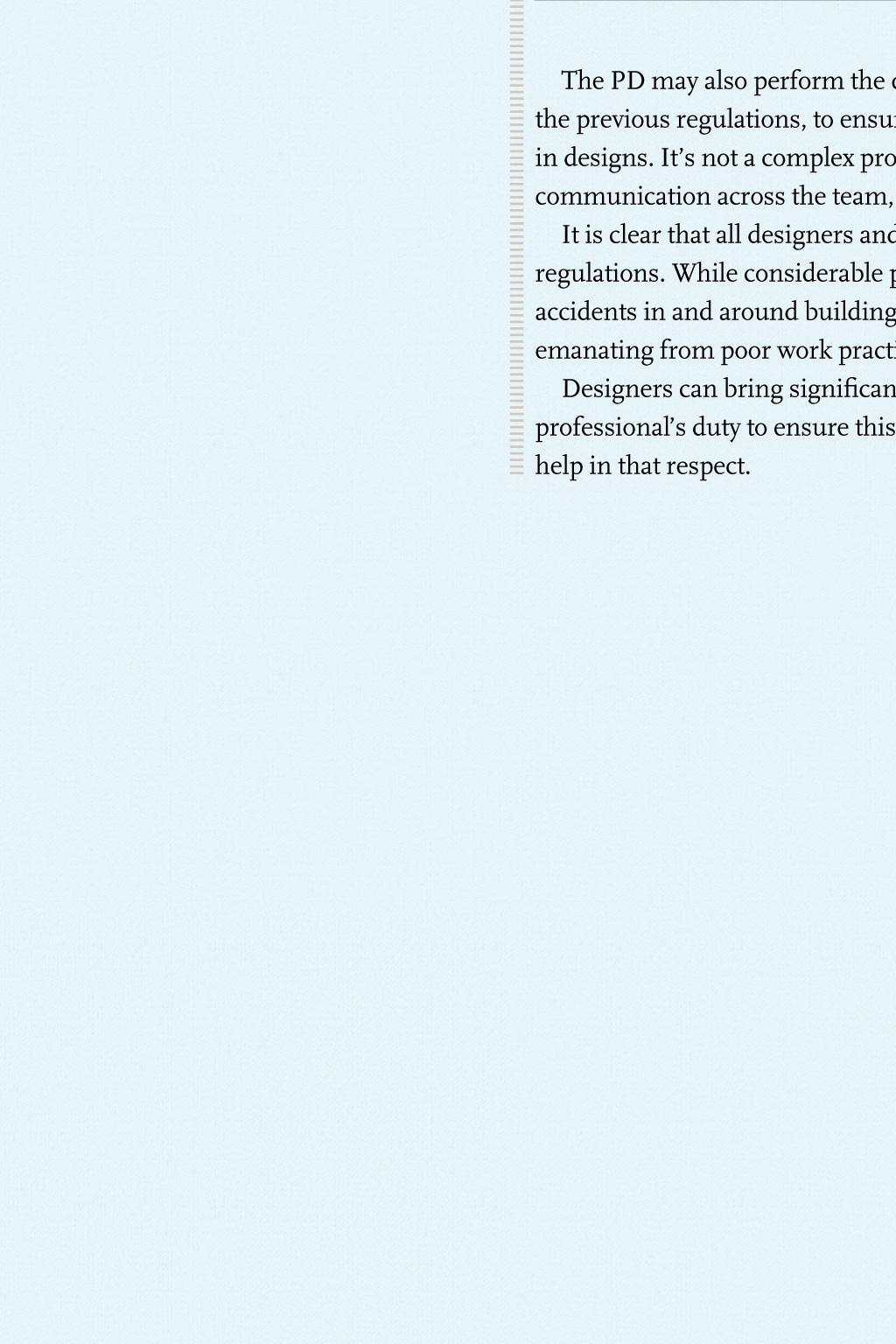












Opinion Designs On Health And Safety New CDM Regulations are replacing the role of coordinator with that of principal designer, so consultants will have more responsibility for health and safety. Peter Caplehorn reports Peter Caplehorn is policy director and deputy chief executive of the Construction Products Association www.constructionproducts.org.uk On 6 April, Construction (Design and Management) (CDM) Regulations 2015 come into effect, with several important changes that, hopefully, will herald a more effective approach to making construction, maintenance and demolition safer. These latest regulations follow several iterations. Instigated by European Directive 92/57/EEC in 1992, the CDM rules have never had the smoothest of passages. This time, the Health and Safety Executive (HSE) has spent a considerable amount of effort fine-tuning the regulations, and has liaised with industry in an attempt to consider any potential unintended consequences. Unforeseen elements have, in the past, blighted the regulations, especially in the pre-construction phase. CDM has always been about making construction, maintenance and demolition safer. All designers have a significant role to play if they are allowed to. For too long, many have felt that CDM is not within their remit, or that they cant exert influence. This is definitely not the case; however, after non-designers stepped into the role, bureaucracy bloomed, and there has been little benefit to health and safety. With the latest set of regulations, we have a new opportunity. There is a clear desire by the HSE for less bureaucracy and more focus on practical and proportionate health and safety. There are many areas of improvement. Previously, several elements of the regulations did not reflect the directive, including the exclusion of domestic clients, which are now covered by CDM 2015. The domestic client is important on small projects where, perhaps, there are only two contractors; they need to work together to ensure a safe approach. Under the new regulations, the role of the CDM coordinator (CDM-C) has been dropped. The CDM-C was a liaison officer between the client and the consultants and contractors, but the HSE felt the role offered few tangible benefits for health and safety. In addition, clients thought it gave them poor value for money. CDM 2015 introduces the role of principal designer (PD), who will be appointed from the design team and have responsibility for minimising risk in the design. There are also simplified notification trigger points: projects of more than 30 working days, employing more than 20 workers or exceeding 500 person-days, must now be notified. The regulations put more onus on clients to ensure correct measures, resources and procedures are applied. The duties for contractors and site management remain largely the same. For too long, many designers felt that health and safety was not within their remit or they couldnt exert influence The principal designer The PD is not a direct replacement for the CDM-C; it is a role for the designer or consultant. The PD needs to have authority over the design phase, understand construction, and be able to lead the team. Often, engineers will be in this position and there is every likelihood this would be a very good fit. For the purpose of these regulations, a designer will have influence over choices of materials and specifications. The role includes collating health and safety information, and ensuring the design team reduces or eliminates risk in the building throughout its life-cycle. Creating a health and safety file for the end of the project is also a duty, as well as ensuring the client understands its responsibilities. There is a requirement to ensure the contractor understands the design and has sufficient information. The PD role can finish when the project starts on site, or continue through the construction period to ensure design issues are picked up and the H&S file is handed over. There is flexibility in the PD role, recognising that contracts and remits vary from project to project. For example, the PD may hand over the H&S file when the project goes on site, when their commission ends. If the PDs responsibilities continue during the construction phase, they will need to assimilate all the necessary information and hand the file to the client at the completion of the project. The PD may also perform the duties of the designer. These are broadly, as under the previous regulations, to ensure hazards are minimised or at least flagged up in designs. Its not a complex procedure, but is most successful when there is good communication across the team, and simple clear records are kept. It is clear that all designers and consultants can play a central role in these new regulations. While considerable progress has been made, we still have too many accidents in and around buildings. We also have too many long-term health issues emanating from poor work practices. Designers can bring significant influence to bear in these areas and it is a professionals duty to ensure this continues to improve. These new regulations will help in that respect.